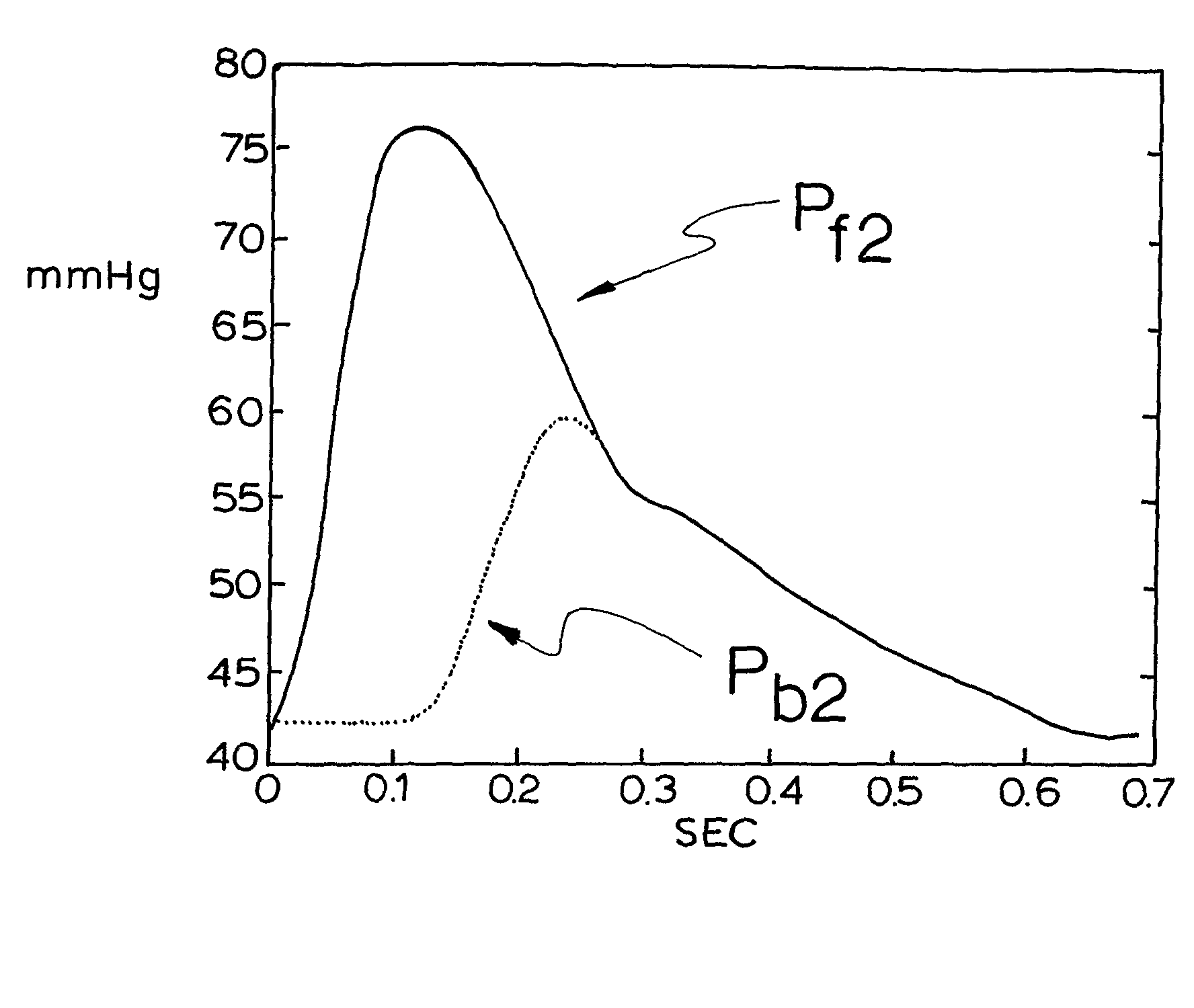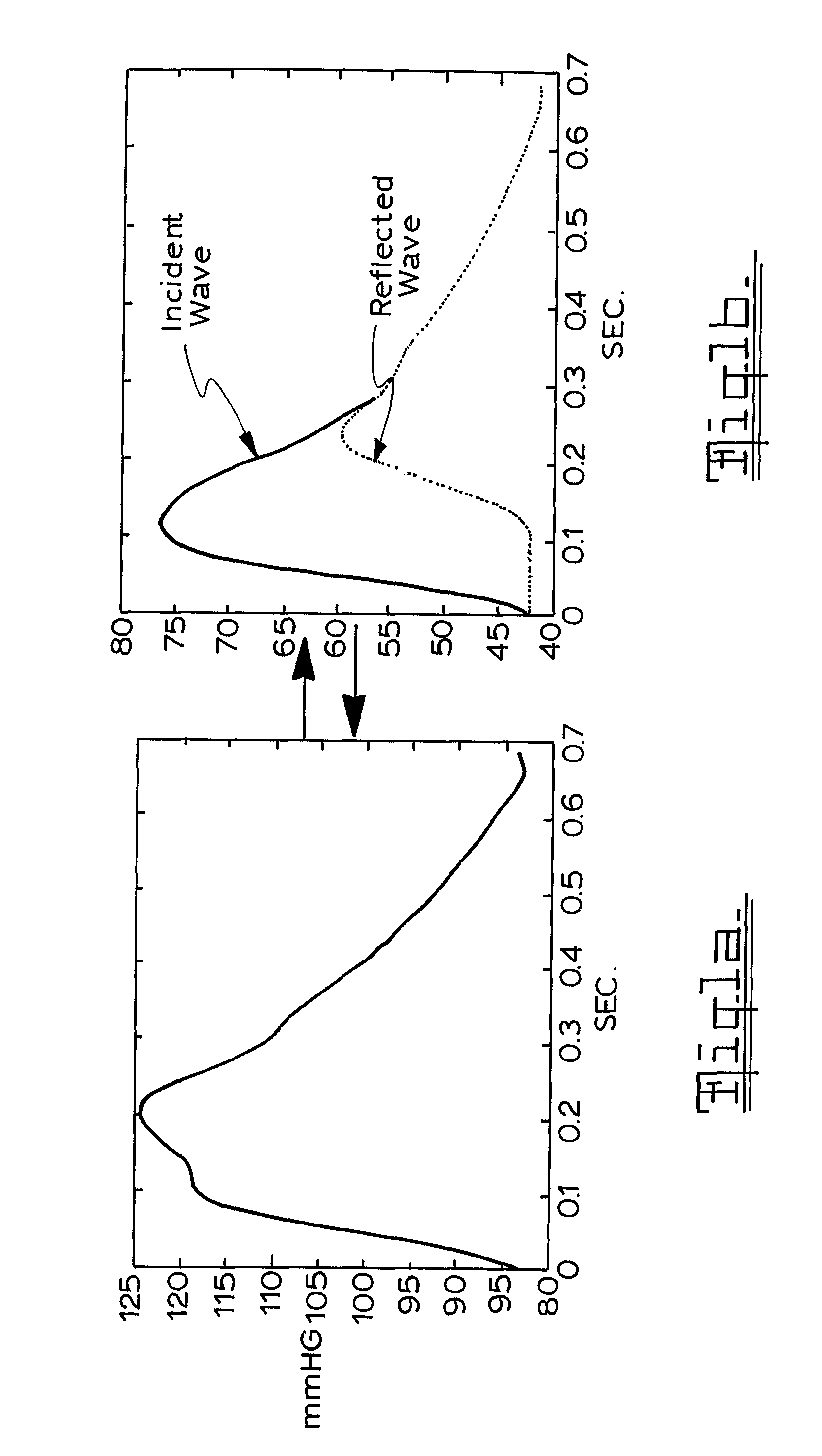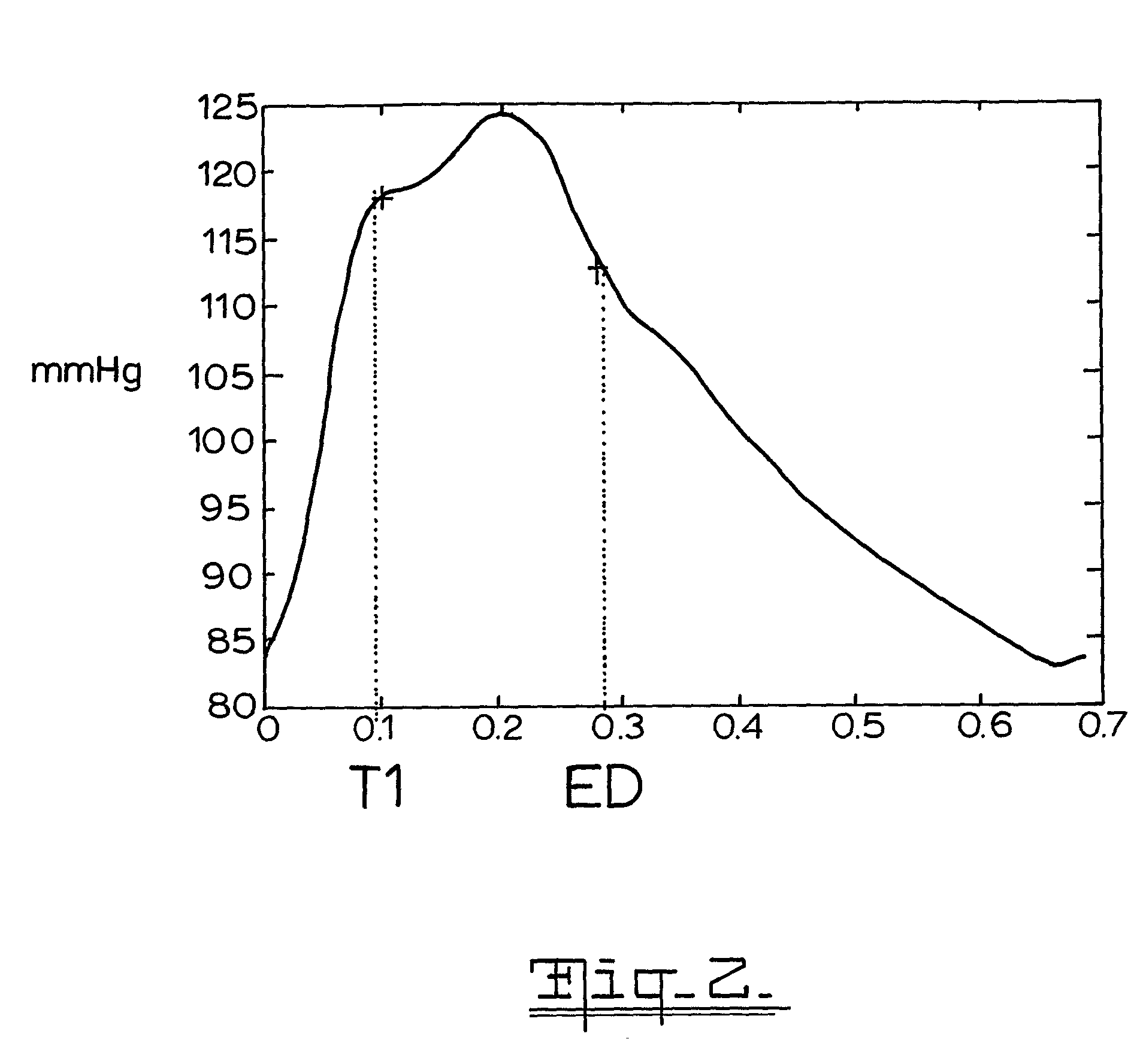Method of estimating pulse wave velocity
a pulse wave velocity and pulse wave technology, applied in the field of method of estimating blood pressure pulse wave velocity, can solve the problems of increasing the risk of heart attack, heart failure and stroke, mortality and morbidity in industrialised nations, and relatively time-consuming and slightly invasive to the patien
- Summary
- Abstract
- Description
- Claims
- Application Information
AI Technical Summary
Benefits of technology
Problems solved by technology
Method used
Image
Examples
Embodiment Construction
[0059]FIG. 1a shows an ascending aortic pressure waveform. FIG. 1b shows the deconstruction of the pressure wave into two components: the Incident Wave, which is related to left ventricular activities as a result of the heart's contraction; and the backward or Reflected Wave, which is related to, and mainly reflects, arterial elastic properties.
[0060]This deconstruction provides a better understanding of the interaction between cardiac and vascular activities and allows for waveform features to be directly related to either cardiac or vascular activity.
[0061]An embodiment of the present invention will now be described which allows measurement of the time of the arrival of the reflected wave back at the heart, which is known to be related to the aortic PWV. More particularly, the embodiment allows the incident and reflected waves to be calculated non-invasively from parameters available from the Applicant's SphygmoCor Vx (Trade Mark) Pulse Wave Velocity system, in pulse wave analysis...
PUM
 Login to View More
Login to View More Abstract
Description
Claims
Application Information
 Login to View More
Login to View More - Generate Ideas
- Intellectual Property
- Life Sciences
- Materials
- Tech Scout
- Unparalleled Data Quality
- Higher Quality Content
- 60% Fewer Hallucinations
Browse by: Latest US Patents, China's latest patents, Technical Efficacy Thesaurus, Application Domain, Technology Topic, Popular Technical Reports.
© 2025 PatSnap. All rights reserved.Legal|Privacy policy|Modern Slavery Act Transparency Statement|Sitemap|About US| Contact US: help@patsnap.com



